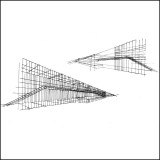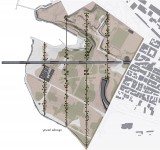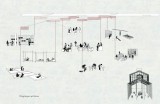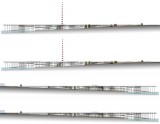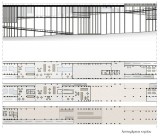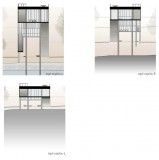Supervisors:
2014
This thesis objective is based upon the potential access to the seafront of Drapetsona region through the creation of a metropolitan scale open public space in the location of the former industrial compound of Lipasmata.
The characteristic of being unreachable is persistent in the region for many years now, actually a wall exists, separating the town from seafront. The previous use marks are gradually fading out through time, while new use has not yet been realized despite the many proposals that have been filled. Furthermore the region is considered, by the local community, as a field of consistent reclaims, mostly because of its limitless potential to provide green space in an area characterized by dense urban construction, as developed in the 20th century.
We attempt to answer these questions by extending the road connecting Drapetsona region with the former fertilizer units. We are creating a pier that functions as a walking axis to the seafront, a new ground within and beyond the existing.This new ground serves as a discovering function of the existing, for the city itself as well as for the ground of Lipasmata.Reversing vertically the image of the town, we place activity layers, scheduled and relevant with free time under this axis. These layers function as buffers in the town’s exit to the Lipasmata ground, where we create four walking and green axis, crossing the area. We thus contribute to the ground reoccupying efforts, which the natural element seeks, aided by abandonment and two decades time since the demolition of the former factory establishments and we envision the prevalence of a metropolitan park.
We attend the existing ground as an infusion of rubble traces that are unable to establish the image of its former use. We attempt to answer the historical memory issue that stems from this fact, not by revival of abolition of the past, but rather with a dynamic historical record that communicates with the contemporary and keeps looking for new uses, keeping eyes open to the past.
